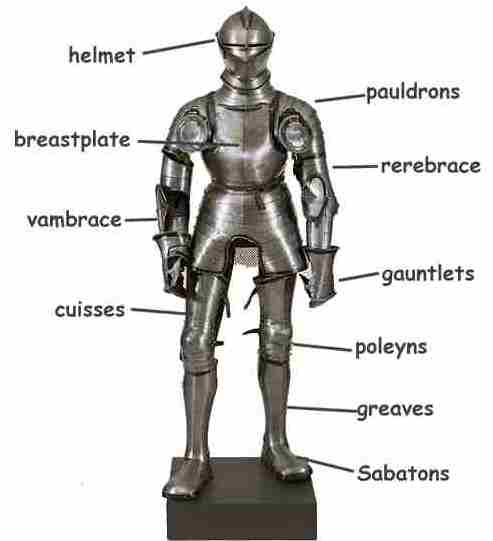
When the digger brought it up it was in peat," he told the Journal. "It only rusts if you have water and air and if it's only in water it survives. Orme said that Seaver would be working closely with Knights & Conquest over the coming weeks and added that the chain mail was discovered encased in peat soil at the bottom of a river, ensuring its preservation over the last 800 years.ĭ'Arcy also attributed the chain mail's pristine condition to its preservation in peat. However, Orme told IrishCentral that the hauberk has been verified by archaeologists and has been observed by Matthew Seaver, the Assistant Keeper of Irish Antiquities at the National Museum of Ireland. If original, and found 'in a drain', it would be a thin, rust-red colored deposit or ‘cake’ of iron oxide, if even it survived as that," O'Sullivan wrote on Twitter. "This is almost certainly not a genuine medieval chain mail. Essentially, a knight’s armor went through three stages: leather armor, chain mail armor, and lastly plate mail armor. Of course, as warfare technology increased, so too did a knight’s armor have to advance as well. These “ceremonial” suits of armor are usually very ornate, featuring extensive fluting, intricate engravings, and other decorative features more at home in the world of fashion than battlefield utility.O'Sullivan said that the hauberk was most likely owned by a "modern re-enactor" and said that he doubted whether a genuine piece of iron chain mail could survive for 800 years. Knights are usually thought of as wearing a type of armor and fighting in combat on horse or on foot. The knight and his plate armor were now relegated to ceremonial duties and displays. The cumbersome armor of a knight proved ineffective and impractical against new weapons and tactics. 15th/16th century) the face of combat changed. With the effective use of gunpowder weapons (ca.
#When did medieval europe knights start wearing chainmail full
Ironically, it was soon after the development of the full suit of plate armor that the medieval knight’s advantage in battle began to wane. The shield became smaller, or disappeared altogether as it became unnecessary and redundant. Chainmail armor was now relegated to protecting smaller vital areas that could not be covered with plate armor, such as the groin and under the arms. The medieval “knight in shining armor” that most people think of is the fully plate-armored knight. late 13th/early 14th century), first as reinforcements to vital areas such as the chest and shoulders, and finally as a complete suit (ca.

Late in the Middle Ages plate armor began to appear (ca.


In most of Europe, though, the trend was always toward incorporating the. As the medieval arms race progressed and new, more powerful weapons were developed (such as the longbow and crossbow), chainmail became ineffective on its own. During the Middle Ages, armor began as flexible chainmail tunics and only. this was meant to be a space where Id show off the fancier looking skins I was using. Underneath the metal armor the knight would wear a padded garment known variously as an “aketon,” or “gambeson.” To this defensive equipment he added a shield, usually made of leather-covered wood, and a helmet (see Knights And Armor’s Helmet Page). Languages: Elves begin play speaking Common and Elven. Because of the mild steel produced in medieval times each ring had to be riveted to keep all the rings from spreading and opening under the weight of the piece. Medieval knights charging on horseback, covered from head to toe in chainmail or plate armour. A knight in chainmail armorĪmong the earliest metallic armor to be worn by medieval knights was chainmail armor, consisting of tens of thousands of interlocking rings woven painstakingly by hand to form a shirt, coif, or leggings. Armoring one’s self during the Middle Ages was a great expense that only the wealthy could afford. In fact, it was their protective armor that helped define them as a military unit and social class. Protecting oneself in battle has always been a concern for any soldier, and medieval knights were no exception.


 0 kommentar(er)
0 kommentar(er)
